- | 9:00 am
How automakers insidiously shaped our cities for cars
From GM’s Motorama show in the 1950s to Hyundai’s more recent Smart City model, automakers have long meddled in urban planning.
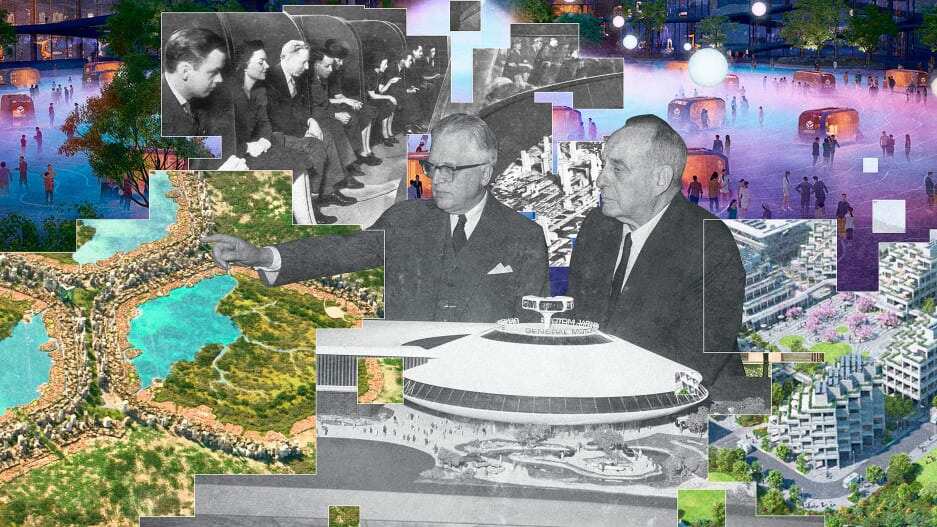
In July 2022, Hyundai Motor Group (HMG) presented a futuristic model showcasing its latest vision for a smart city. Air taxis and autonomous delivery robots aside, the concept was pretty straightforward: Pedestrians would move around aboveground, and most traffic would be relegated to giant, subterranean car tunnels.
Inspired by a honeycomb, Hyundai’s hydrogen-powered city consists of a series of hexagons ringed by buildings and filled with lush landscapes like parks and forests. The buildings are divided into three sections, based on the level of density. Meanwhile, citizens would travel between cities using flying cars while goods and services would be transported underground.

As wild as this vision was, the 2022 World Cities Summit in Singapore, where the model was displayed last month, came and went, and Hyundai’s proposal, too abstract for anyone to pay attention to at this point, was immediately forgotten. That could’ve been the end of it, but it most likely won’t be because the Hyundai city is simply the latest chapter in a rich history of automakers meddling in urban planning.“We’ve designed car dependency into our cities quite deliberately, and car companies have influenced that,” says Brent Toderian, a city planner, Vancouver’s former planning director, and a vocal critic of Hyundai’s vision. For as long as auto companies have existed, they have perpetuated one thing above all else: car dependency.
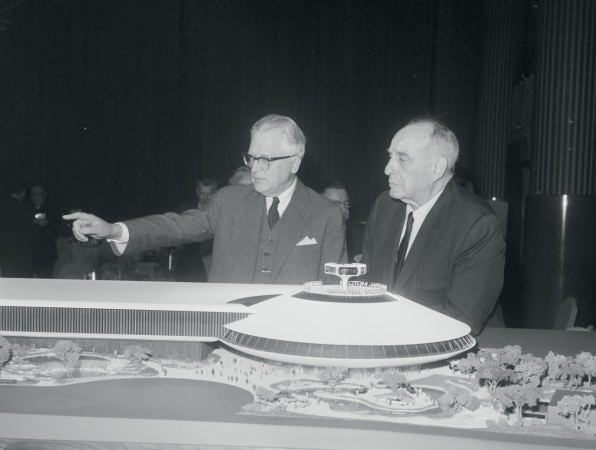
SELF-INTEREST IN DISGUISE
In 1956, General Motors showcased its vision of the future in a short film about autonomous driving in what was then the distant future of 1976. The film opens with a picture-perfect family of four singing about being stuck in a traffic jam, while stuck in a traffic jam. Then the boy in the front passenger seat turns a knob on the radio, and the family is transported into one of GM’s dazzling Firebird II concept cars, gliding on a suspiciously empty road in what looks like Utah. The boy then radios in a traffic control tower that reroutes the car on an “electronic control strip.” The car switches to autopilot, and the family is whisked away to Chicago on a high-speed safety lane while snacking on orange juice and ice cream sandwiches pulled from the car’s clutter-free glove compartment.
Utopian though it may seem, the film was part of a very real auto show called Motorama, which traveled around the U.S. and captivated millions of Americans. These auto shows featured new car models, but also runway fashion shows, an orchestra, and dance performances designed to lure potential buyers and ultimately boost car sales.
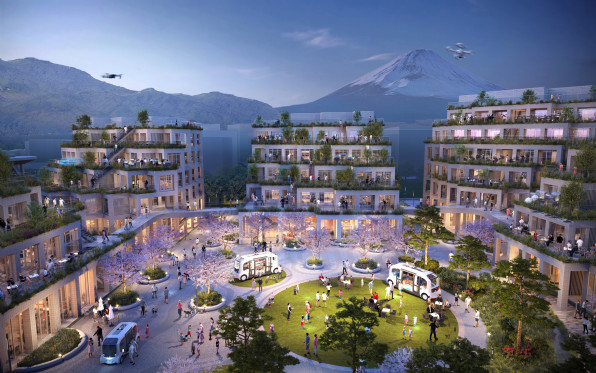
The contours of this technique may be a little different today, but the fundamentals of self-interest haven’t changed. In 2021, Toyota broke ground on a 175-acre prototype city at the base of Mt. Fuji in Japan. Dubbed “Woven City,” it was designed as a “test course for mobility,” as its website suggests. It, too, features an underground network for city logistics like commercial transportation and deliveries, plus three distinct roads aboveground: one for self-driving cars (which Toyota is developing), one for pedestrians and regular cars, and a third for just pedestrians.
“For as long as there have been cars, car manufacturers have aggressively been seeking to shape our cities for one primary reason: To design cities where that will help them sell more cars,” says Toderian. The irony is that the main challenge plaguing cities today is the excess of cars, and the vicious infrastructure that supports them. “You can’t fix the problems you’re in by using the same solutions that got you there,” he says.
You might argue that a car company’s proposal for a smart vision is nothing but a self-centered fantasy. But what lies beneath is constant, “insidious” lobbying, as Toderian puts it. In 2021 alone, for example, General Motors shelled out over $9 million on lobbying, Toyota spent around $6 million, and Hyundai $1.2 million. And though all three automakers (and many more) are now shifting toward electric cars, many have also been lobbying to weaken fuel economy standards. “What car companies do is they’re constantly, successfully lobbying, then they occasionally put out into the public a distracting vision,” says Toderian. “And it usually reflects an expectation of car use and even car dependency.”

FROM STREETS FOR ALL TO STREETS FOR CARS
Zoom out a little, and you will notice that reframing the discourse is a bit of a go-to tactic in the automotive industry. It happened with highways, which were vaunted as a solution to traffic congestion (they’re not), and it happened with crosswalks. Look at a street before cars boomed in the 1920s, and you will notice a lot more people on the road. That’s because pedestrians shared streets with vehicles, be they trams or horse-drawn carriages.
About a century ago, says Peter Norton, an assistant professor at the University of Virginia and the author of Fighting Traffic, a book about the dawn of the motor age in U.S cities, crossings consisted of raised paving stones that allowed pedestrians to safely cross the street without getting their clothes dirty from the muddy street. Notably, however, crossing at those designated areas was only an expectation for pedestrians’ convenience, not a law.
“There was an explicit understanding that the pedestrian was entitled to free access of the whole street,” says Norton, citing numerous court cases where drivers were sued and the driver was lectured about their recklessness. The 1920s changed all that, when auto industry groups invented jaywalking—and once again, reframed people’s perception of the street from a place for all to a place where the car is king, by shaming daring pedestrians for crossing illegally.
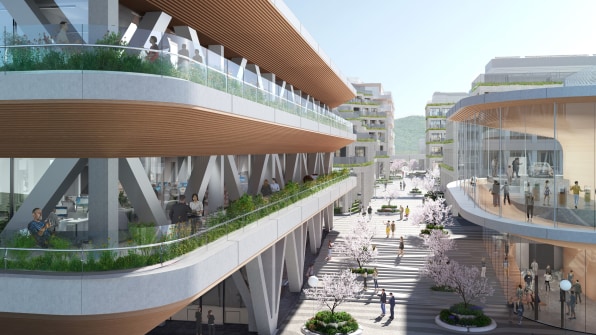
SWEEPING CARS UNDER THE CARPET
To be sure, Hyundai Motor Group claims that the Smart City proposal isn’t all about cars. “Both the biggest trend and biggest challenge in city development nowadays is how to expand pedestrian areas to make cities more walkable,” HMG president and chief innovation officer Youngcho Chi told me via email. “We believe that a lot of public transit, not just service traffic, should also go underground, but we have to keep in mind that we want people to see the scenery and feel connected to the city instead of just moving efficiently from point A to B.”
Chi declined to disclose if the company is working on any specific projects at this stage. He said that the smart city was a “concept for reference,” but that some ideas may serve as a “teaser” for what the company will do in the future.
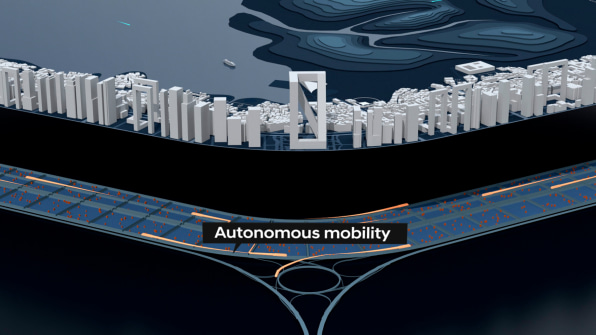
There are many reasons why Hyundai is proposing underground infrastructure. Like Elon Musk’s Boring Company and its “Teslas in tunnels,” Hyundai is hoping to solve congestion and bottleneck traffic, as Chi notes. But separating cars from pedestrians is an old idea with little proven precedent. In the 1960s, for example, Paris laid out a plan for a business district on the outskirts of the city. Today, La Défense is Europe’s largest purpose-built business district, defined by its expansive pedestrian plazas and traffic tucked underground, but as Toderian points out, it can be very cold and big as a result. “Ironically, the people are above, but it’s still scaled to the car because the distances involved are so far apart,” he says.The even bigger problem is that by moving cars underground, cities are just moving the problem elsewhere—”like sweeping all the dust under the carpet,” says Toderian. “Except the dust isn’t still wrecking our future.” This dust, of course, seems like a perfect scenario for automakers. “It’s easy to understand why car companies like it—there’s no pesky people getting in the way of vehicles.”








































